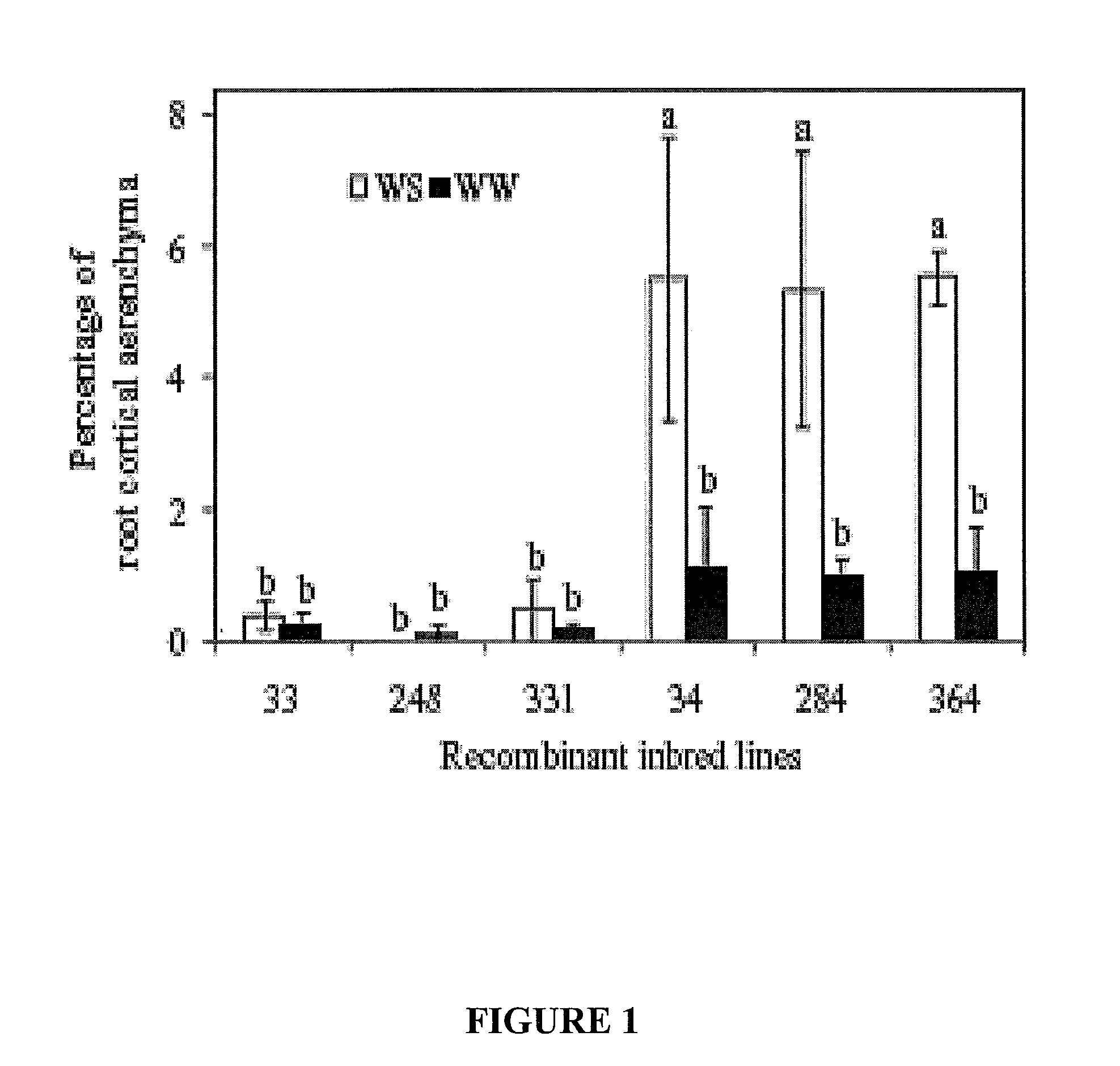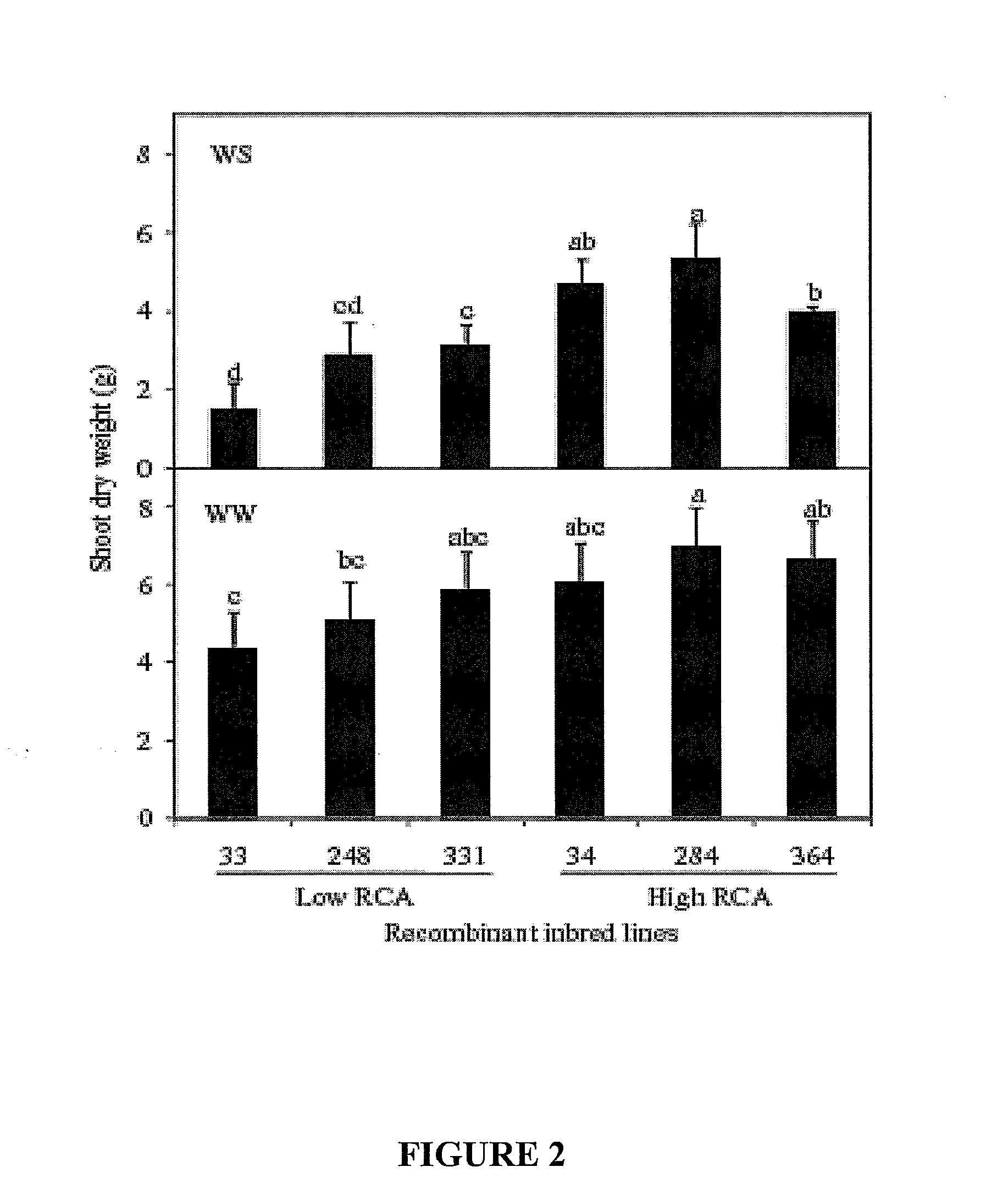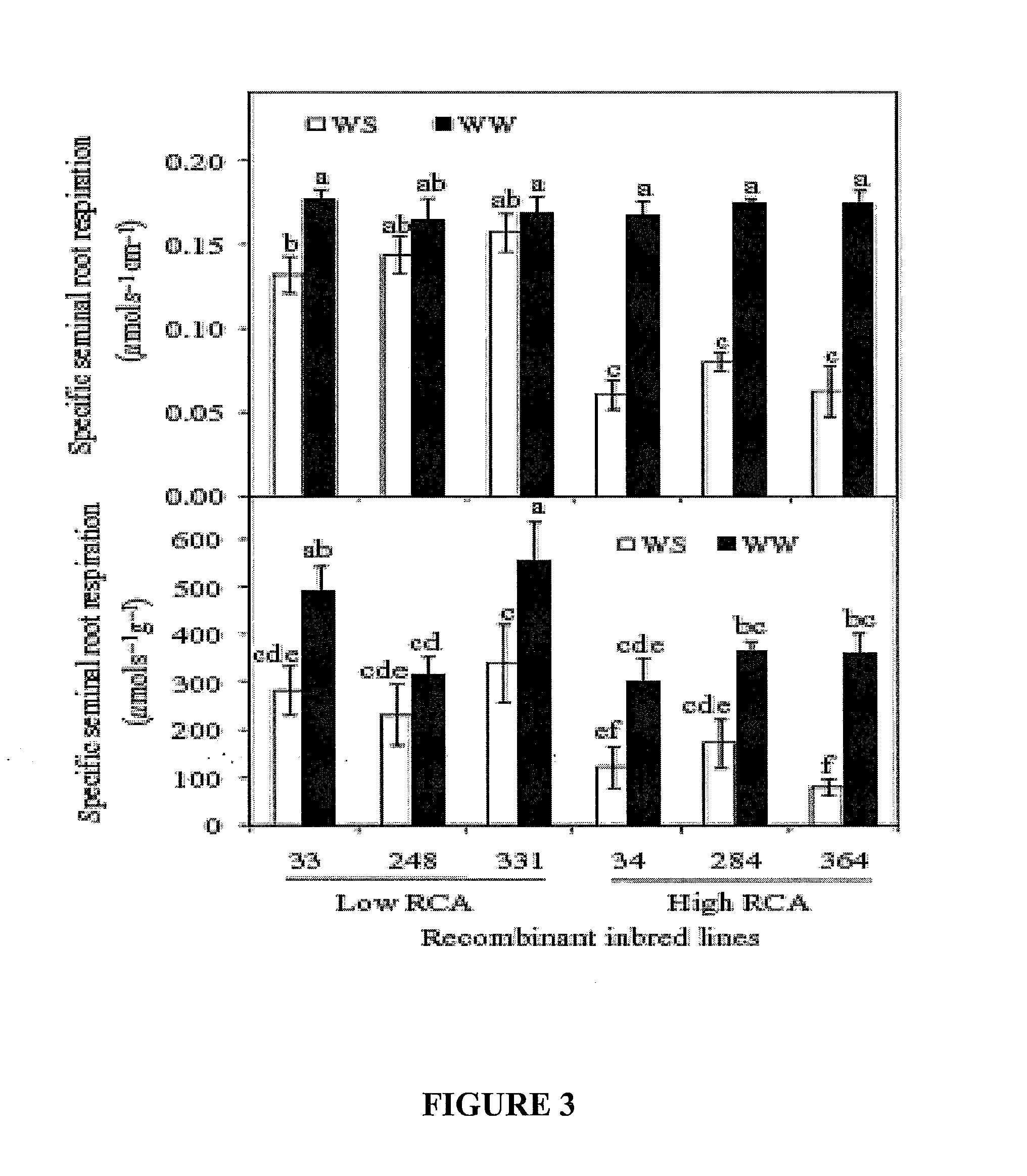Method of increasing soil resource capture in a plant
- Summary
- Abstract
- Description
- Claims
- Application Information
AI Technical Summary
Benefits of technology
Problems solved by technology
Method used
Image
Examples
example 1
[0082]The inventor has surprisingly discovered that plants which develop more aerenchyma under flood conditions are also more tolerant to drought because they are better at capturing water. The inventor planted several inbred lines of maize (Zea mays L.) under flooded conditions to identify / confirm the lines that develop high amounts of aerenchyma and those that develop low amounts of aerenchyma in response to flood conditions. The difference in aerenchyma between the high and low aerenchyma lines would also be observable if the plants were grown under well-watered conditions. The same inbred lines were planted under drought stress. Surprisingly, the plants with high aerenchyma phenotypes were grew better under drought conditions, and thus, were more drought tolerant than the plants with low amounts of aerenchyma.
[0083]Materials and Methods
[0084]Six recombinant inbred lines (“RILs”) of maize (Zea mays L.), numbered 33, 34, 248, 284, 331 and 364 were obtained. These RILs were charact...
example 2
[0117]SimRoot, a functional-structural plant model, was used to evaluate the potential importance of root cortical aerenchyma (RCA) as an adaptation to low phosphorus availability in a quantitative manner. SimRoot is a mechanistic model which allowed us to evaluate the quantitative relevance of the two proposed functions of RCA formation in phosphorus deficient maize and bean. The results discussed below can be used to support breeding programs for soil mineral (for example, primary macronutrients) efficient plants, such as maize and bean. This assessment of the potential benefits of RCA formation includes the effect of elevated CO2, since it is expected that atmospheric CO2 concentrations will continue to rise. A high CO2 environment may increase photosynthetic rates, especially in C3 plants, as photorespiration is reduced under elevated CO2. Greater carbon assimilation may decrease the relative benefit of carbon saving strategies like reduced respiration, while phosphorus remobili...
example 3
[0149]Breeding for high levels of RCA formation results in crops with better growth in soils characterized by a several edaphic stresses, including drought, phosphorus deficiency, potassium and nitrogen deficiency.
[0150]RCA formation is a strongly plastic root trait. The amount of RCA that forms in the cortex depends on many factors including genetic, exogenous (environmental), and endogenous cues. As a result the amount of RCA that is formed in the cortex may differ between and within root classes of the same plant, and may vary along the length of a root segment. Quantitative information on local RCA formation is sparse and difficult to relate to exogenous or endogenous cues.
[0151]RCA leads to increased resource availability in plants. The benefit of RCA depends strongly on the existence of a positive feedback of increased resource availability on root growth and thereby nutrient uptake. Thus, the benefit of RCA is large when root growth is source-limited, not sink-limited. Stress...
PUM
 Login to View More
Login to View More Abstract
Description
Claims
Application Information
 Login to View More
Login to View More - R&D
- Intellectual Property
- Life Sciences
- Materials
- Tech Scout
- Unparalleled Data Quality
- Higher Quality Content
- 60% Fewer Hallucinations
Browse by: Latest US Patents, China's latest patents, Technical Efficacy Thesaurus, Application Domain, Technology Topic, Popular Technical Reports.
© 2025 PatSnap. All rights reserved.Legal|Privacy policy|Modern Slavery Act Transparency Statement|Sitemap|About US| Contact US: help@patsnap.com



